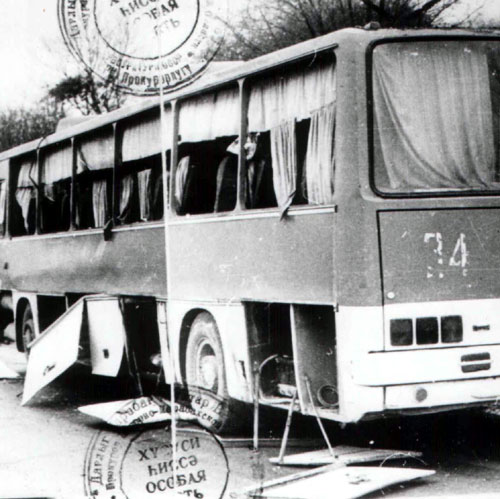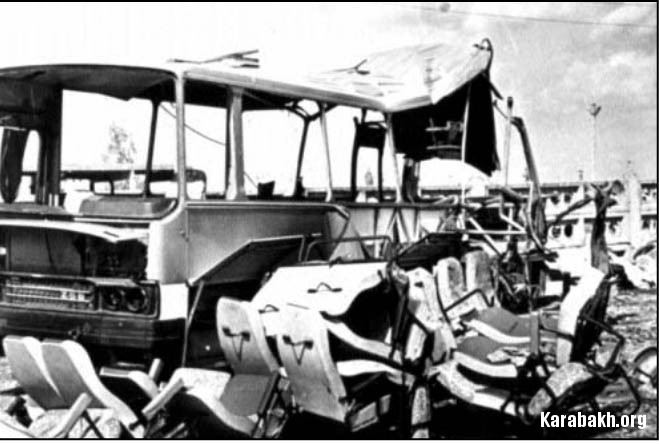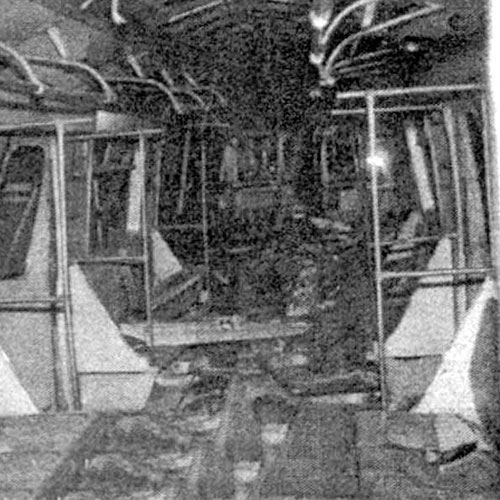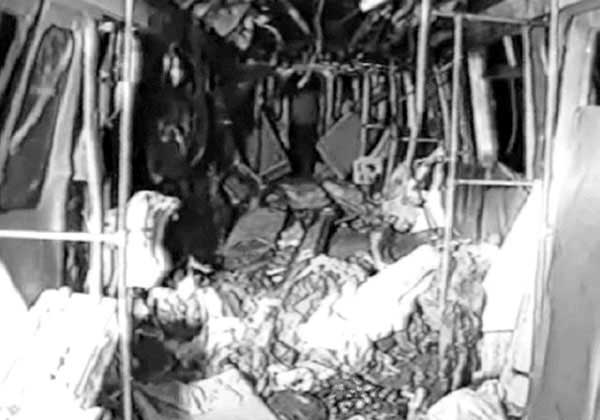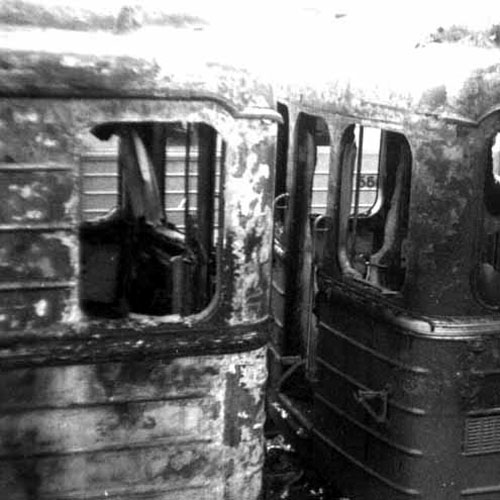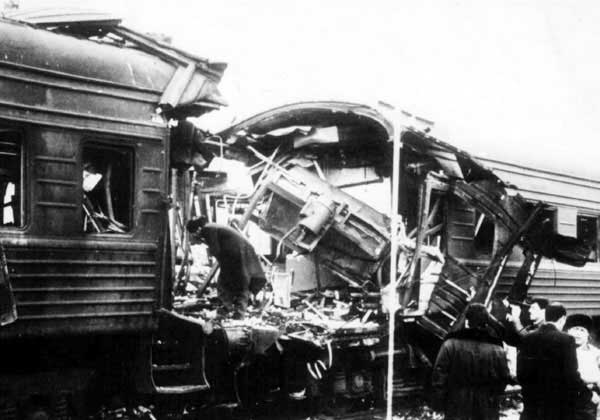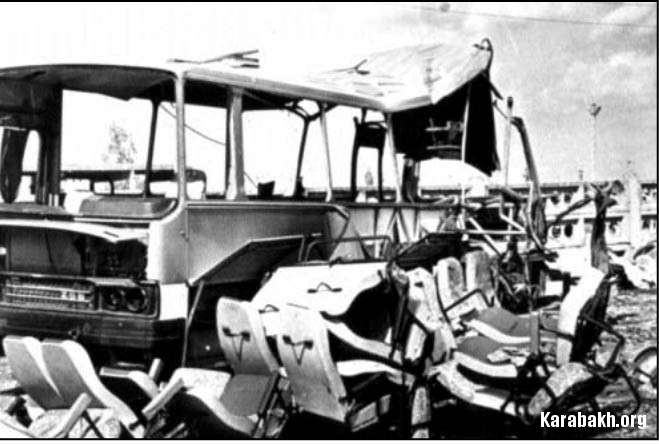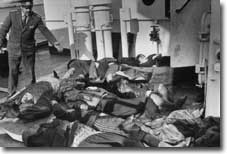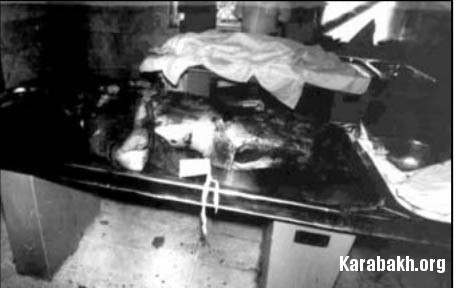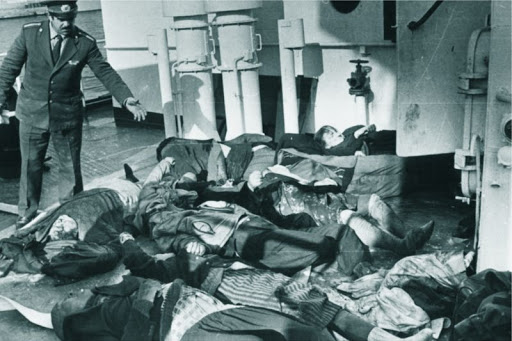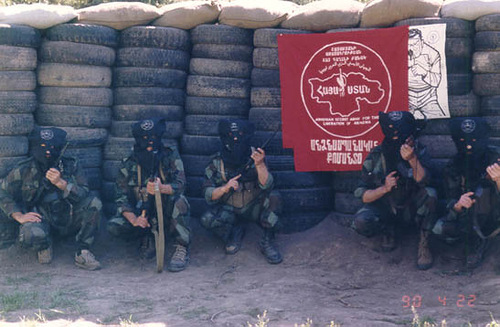Along with its open aggression against Azerbaijan, Armenia is actively engaged in subversive activity on Azerbaijani territory.
«Acts, methods and practices of terrorism constitute a grave violation of the purposes and principles of the United Nations, which may pose a threat to international peace and security, jeopardize friendly relations among States, hinder international cooperation and aim at the destruction of human rights, fundamental freedoms and the democratic basis of society».
From the Declaration on Measures to eliminate international terrorism adopted by the United Nations General Assembly at its forty-ninth session, 1994 (Resolution 49/60).
The Armenian secret service and various Armenian terrorist organizations systematically and deliberately perpetrate acts of terrorism against peaceful citizens in Baku, Ganja and other major centers of Azerbaijan, targeting industrial units and transportation means. Available data indicate that Armenian terrorist organizations have substantial resources at their disposal as well as ample «experience» in preparing and implementing terrorist acts.
There ample proof of Armenia’s responsibility for terrorist activities against Azerbaijan and other States, its cooperation with various terrorist organizations, and its assistance to terrorist organizations by making its territory available to them for use as bases and training camps against the States of the region.
Evidence of the special relationship between Armenia and international terrorists can be seen, for example, in the fact that signatures of 1,227,473 Armenians were collected, defending Varujan Karapetyan, a terrorist, who was sentenced in France to life imprisonment for placing explosives near the office of Turkish Airlines at Orly Airport. The sixth grade at a school in Yerevan had already been named in his honor, and in Yerevan and Echmiadzin exhibitions of his paintings were organized. As a sign of sympathy for the terrorist, President Levon Ter-Petrosyan asked his French counterpart Jacques Chirac, to pardon V. Karapetyan. The President of Armenia participated in the memorial service, attended by 50,000 people for the well-known international terrorist Monte Melkonyan and also was present at the latter’s funeral in Yerevan.
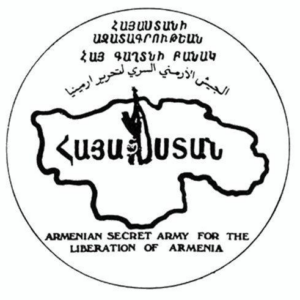
The use of terrorism to implement Armenia’s aggressive plans has bloody historic antecedents. Armenian terrorist organisations began to emerge in the late nineteenth century in the form of the Institute of Violence. Aimed at the establishment of «Greater Armenia». Armenian terrorism assumed global dimensions in the early 1970’s. When terrorist training bases appeared in a number of countries. Activity of such terrorist organizations as the «Armenian Secret Army for the Liberation of Armenia» (ASALA), «The Commandos of Justice of the Armenian Genocide» and the «Armenian Revolutionary Army» was carried out mainly in the countries of Western Europe and North America.
Unlike the nationalist parties Hnchak and Dashnakhsutiun, which formulated an ideological platform based on a policy of assertion of territorial claims, these organizations fall into a strictly military-terrorist category dealing with «practical problems» in implementation of the «projects» devised by their ideologues. They are to blame for murdering hundreds of people.
It is an established fact, for example, that the founder of the ASALA Akop Akopyan, began his dismal career as a member of the terrorist group that massacred the Israeli athletes at the Munich Olympic Games in 1972.
In January 1978 a terrorist group consisting of S. Zatikyan, Z. Bagdarsyan and A.Stepanyan caused an explosion in the Moscow underground railway system, whose victims were innocent citizens, including women and children.
The foremost acts of Armenian international terrorism occurred in the 1980s, when ASALA was involved in the organization of a series of bomb blasts in Paris. Ten people were killed and 150 injured as a result of these terrorist acts.
Acts of Armenian Terrorism in Azerbaijan
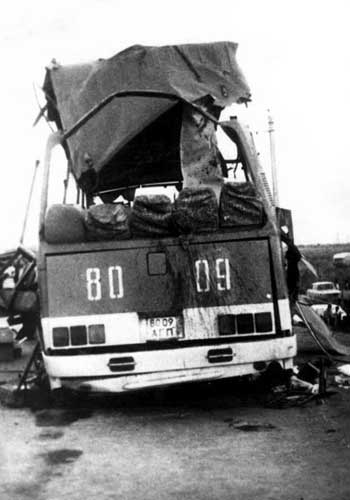
In 1984 a passenger bus on the No.l06 route was blown up in Baku, killing one woman – mother of two children – and injuring several other people. Azerbaijani Special Forces have detained the terrorist responsible for the crime, identified as an Armenian named Vartanov.
Since the late 1980s, Armenian terrorism in the former USSR has tended to increase, particularly following Armenia’s territorial claims on Azerbaijan and the launching of armed operations in the Mountainous Karahakh region of the Republic of Azerbaijan.
From early 1988 terrorism in Armenia was elevated to state policy and its sole target became the territory of Azerbaijan. Weapons and ammunition were transported from Armenia, to the Mountainous Karabakh region into the hands of the underground Armenian terrorist groups. In 1988 alone, more than 100 cases of the illegal manufacture and theft of firearms were uncovered by the law enforcement agencies of Azerbaijan. During the same year, Armenian terrorists perpetrated 32 terrorist acts on the territory of the Mountainous Karabakh region of Azerbaijan and in districts bordering Armenia.
Terrorists have disrupted roads between Azerbaijani villages and on numerous occasions blew up bridges and other vital facilities, including the pipeline supplying Ganja (Azerbaijani second largest city) with its drinking water.
On October 7, 1989 a bridge across the river Halfalichay on the southern edge of the town of Khankendi, was destroyed. On 29 April 1992, the perpetrator of this terrorist act – A. Abramyan – was sentenced to 15 years imprisonment.
Over the period from January 19 to February 17, 1990, a terrorist group based in Yerevan carried out numerous raids from the territory of Armenia on the innocent inhabitants of frontier villages in the Gazakh district of Azerbaijan. These violent actions resulted, among others, in the death of F. Mustafayev, inhabitant of Khirimly village, and S. Magerrarnov and N. Guliev, both shepherds from Sofulu village. The same terrorist group carried out an attack on a patrol vehicle of the Gazakh district division of internal affairs. Two members of the group, L. Arutyunyan and A. Mkrtchyan, detained by the law enforcement agencies of Azerbaijan, were sentenced to five and six years imprisonment.
On February 18, 1990 an explosion in a bus on the Shusha-Baku line injured 13 people.
On March 4, 1990 Armenian terrorists blew up the Nabiyar-Shusha pipeline, which supplied the town of Shusha with drinking water.
On July 11, 1990 between the settlements of Getavan and Charektar in the Agdere district of Azerbaijan, an armed assault was launched on a road convoy in route to the town of Kelbajar. In that terrorist act, three people were killed and 23 injured.
On June 19, 1992 A. Airiyan was identified during the investigation as the perpetrator of this crime.
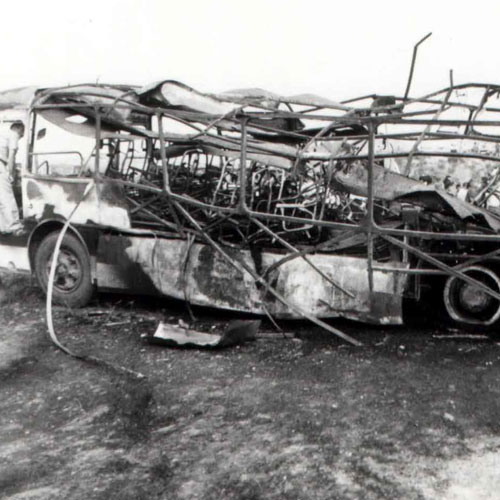
On August 10, 1990 in the Khanlar district of Azerbaijan, Armenian terrorists blew up an inter-city bus operating on the Tbilisi-Aghdam route, killing 20 passengers and injuring 30. Armenians, who perpetrated that terrorist act were arrested just when they were going to carry out their plan to blow up, on June 17, 1991 a bus on the Agdam-Tbilisi route.
M. Grigoryan, a member of the terrorist organization Yerkrapakh, based in Armenia, set up a terrorist group of inhabitants of the Echmiadzin district of Armenia. In November 1990, they were sent to Azerbaijan. This group was disarmed by the law enforcement agencies of Azerbaijan while attempting to carry out acts of terrorism and sabotage. By its decision of June 18, 1991, the Supreme Court of the Republic of Azerbaijan sentenced the members of the group: T. Khachatryan – to nine years; Z. Oganyan – eight years, and A. Grigoryan – seven years in prison.
On January 9, 1991 on the Lachin-Shusha road in the area of Galadarasi village, Armenian terrorists fired on a UAZ-469 vehicle, killing, among others, a journalist from the newspaper «Molodezh Azerbaidzhana» – Ms Salatyn Askerova, born 1969, who left an infant son.
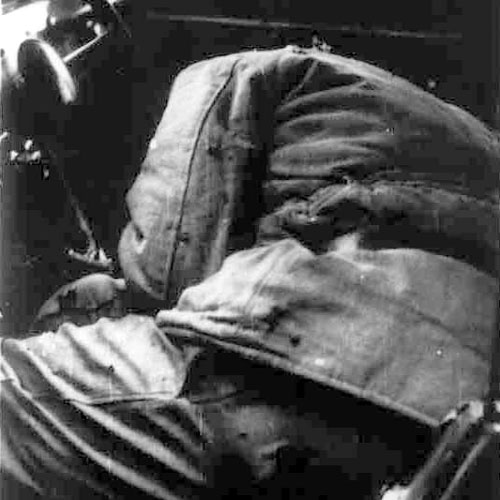
Assassinated passengers of the vehicle. 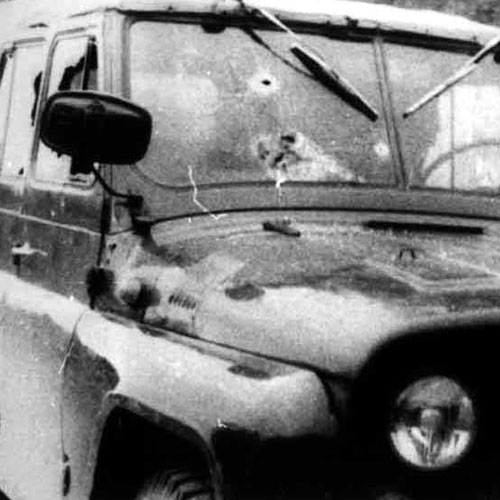
Bombarded UAZ-469 vehicle. 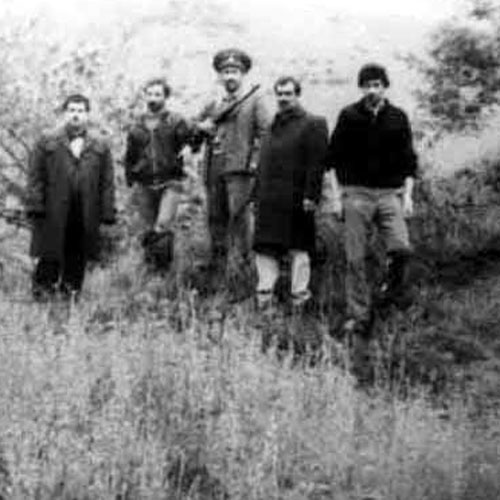
Captured perpetrators of the crime.
On 23 March 1993, the perpetrators of this crime – A. Mkrtchyan, G. Petrosyan, A. Mangasaryan, G. Arutyunyan and G. Arustamyan, who, in addition to the aforementioned case, had been responsible for other acts of terrorism and murders – were sentenced to death, and other members of the terrorist group to different imprisonment sentences.
In terms of safety, the most vulnerable of transportation facilities is rail transport. Besides, acts of terrorism on transport can clearly result in a considerable number of victims, in accordance with a previously arranged plan. Armenians started a terrorist campaign on passenger trains.
On May 27, 1989 on a train from Yerevan to Baku, an Armenian citizen, V. Minasyan was arrested and found to be in possession of an explosive device. In her statement she confessed that she had been intending to carry out an act of sabotage in Baku.
On July 24, 1989 there was an explosion on a train at Karchevan station.
On May 30, 1991 11 people were killed and 22 injured following, an explosion on a passenger train from Moscow to Baku near Khasavyurt station (Russian Federation).
In May 1991 officials of law enforcement agencies arrested S. Aznaryan, an inhabitant of the Novemberyan district of Armenia, in a Baku-Tbilisi train at Shamkir station. He was carrying two mines, a sub-machine-gun and maps of the Azerbaijan’s rail and highway network.
On February 28, 1993 11 people were killed and 18 injured near Gudermes station (Russian Federation) by a bomb placed in a Baku-Kislovodsk train.
On June 2, 1993 a passenger carriage was blown up in a siding at Baku railway station. On July 22, 1994 one I. Khatkovskiy was found guilty of committing this crime and sentenced to eight years.
On February 1, 1994 the Kislovodsk-Baku passenger train was blown up at Baku station, killing 3 people and injuring more than 20.
On April 9, 1994 a railway car was blown up at Khudat (Azerbaijan) station.
On March 19, 1994 a bomb placed in one of the carriages of a train by terrorists exploded in a metro station in Baku. As a result of this act, 14 people were killed and 42 were injured.
On April 13, 1994 six people were killed and three wounded at Dagestanskiye Ogni station, as a result of an explosion on a Moscow-Baku passenger train.
On July 3, 1994 there was an explosion on a train between the «28 May» and «Genjlik» subway stations in Baku, that killed 14 people and wounded 54.
In December 1988, a military transport aircraft on the Baku-Yerevan route with rescue-workers and humanitarian aid for victims of the Armenian earthquake on board, suffered a disaster near Yerevan in unexplained circumstances. The underlying motive for what may well be a «planned air disaster» is completely unprecedented. The 79 victims of this tragedy had been sent on a humanitarian mission from Azerbaijan to Armenia.
On November 20, 1991 an Mi-8 helicopter carrying a group of peace-enforcement representatives from Russia, Kazakhstan and the senior Azerbaijani leadership were shot down near the village of Karakend in the Khojavend district of the Republic of Azerbaijan.The killing of 22 people, including statesmen from three countries, effectively put an end to the first attempt to settle the Armenia-Azerbaijan conflict and prompted an escalation of violence in the region.
On January 28 1992 a civilian helicopter flying on the Aghdam-Shusha route was shot down by Armenian terrorists over the Azerbaijani town of Shusha, killing 41 passengers, most of them women and children, as well as the crew.
On January 8 1992 an explosion on the ferry «Sovetskaya Kalmykia» operating between Krasnovodsk (Turkmenistan) and Baku, claimed the lives of 25 people and injured 88. The same year an attempt to carry an explosive device on to the steamer «Sabit Orujev» was stopped.
